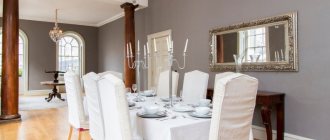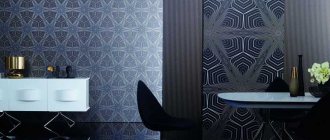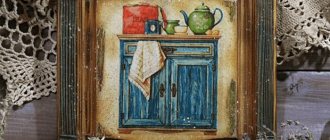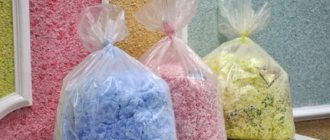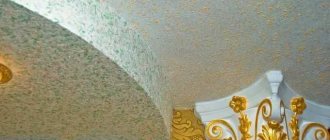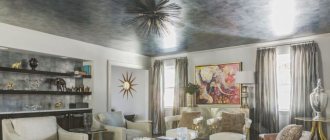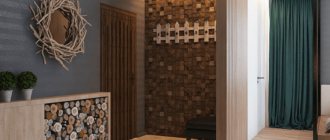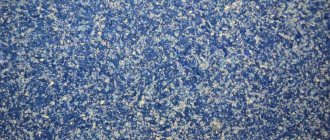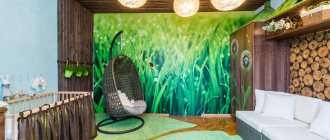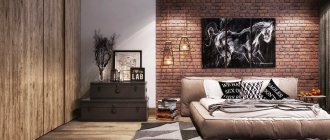Everyone can afford affordable and aesthetic wall decoration. The paper covering will look great in any room. It is enough to choose the right color, pattern, type and size of the canvas to create a beautiful image and make the room cozy and comfortable to stay in. But how to choose wallpaper so that it fully meets all the requirements and meets the wishes without violating the design intent. To do this, you will need to take into account the individual characteristics of each type of material, the level of lighting and other multiple design nuances.
What to consider when choosing wallpaper
The main function that wall canvases should perform in a residential building is decorativeness. The basic decorative element in the form of narrow or wide stripes hides minor defects in the walls and serves as the background of the room. It is easier to keep the walls and ceiling clean; some types of wallpaper can be washed and vacuumed without fear for the integrity of the pattern.
Choosing suitable canvases for the kitchen or living room from a huge assortment is not easy. First of all, you need to take into account the type of room and its features. Even for the most low-traffic and dust-free room, the linens must be of high quality and functional. Selection must be made taking into account the following factors determining durability:
- Environmental Safety;
- Material density;
- Moisture resistance;
- Ability to adhere tightly to any surface;
- Lightfastness;
- Easy to care for;
- Abrasion resistance;
- The ability to absorb noise and allow air to pass through.
Choice of material and type of wallpaper
When purchasing several rolls of wallpaper, you need to evaluate their characteristics in expanded form. It is enough to stretch each one several meters to make sure that the pattern is even and the shades match. Each room has its own type of wallpaper. When choosing canvases, you should take into account their appearance, color scheme and features. The following types of wallpaper can be glued in apartments and houses:
- Vinyl. A decorative layer of vinyl is attached to a paper or non-woven base. The protective coating and dense base make the material strong and durable. A large selection of colors and textures allows them to be used for any living room and bathroom. Due to the maximum similarity of patterns with wood, leather, stone, vinyl wallpaper will harmonize perfectly with any natural material. The disadvantage is the impermeability of air through the top layer, the release of toxic chemical elements by some types.
- Paper. The simplest option for decorating ceilings and walls is made from one or two layers of paper. They can be smooth, textured, with a three-dimensional pattern, or corrugated. Depending on the weight of the roll, its quality is determined. The heavier the product, the better it is. The advantages of paper wallpaper include accessibility, low price and lightness. Disadvantages: poor presentation, limited variety of designs, fragility. Average service life is up to 5 years.
- Non-woven. Popular, expensive canvases combine the positive qualities of paper and vinyl wallpaper. High-density multi-layer rolls consist of cellulose and connecting materials. The wear-resistant surface almost always has a grooved pattern. More often, non-woven wallpapers are produced in light colors, which allows you to paint them yourself. The base contains an adhesive layer, so the material is easy to stick to any surface.
- Textile. The canvases have a unique structure. The top layer of improved drapery is made of viscose, linen, silk. The wallpaper is soft to the touch, looks unusual and discreet. Modern products can last up to 10 years. The disadvantages include the ability to fade under the influence of ultraviolet radiation, the absorbent properties of the material, and the retention of unpleasant odors. Dust is attracted to the surface, leaving stains from splashes when washing floors.
- Acrylic. Budget vinyl canvases. The bottom layer in contact with the wall is made of paper, the top, decorative layer is made of foamed acrylic. The fabrics do not prevent air penetration, have insufficient strength and a short service life.
- Liquid. The application technique of wallpaper is similar to decorative plaster. They may look different on the wall. It all depends on the composition and additional components. The base can be silk, cellulose, cotton. Acrylic dye, glitter, pieces of mother-of-pearl, mica, and various threads are used as additives. Using liquid wallpaper, you can create a seamless, vapor-permeable surface on any plane. Damage in any area can be easily restored. Disadvantages - the possibility of dry cleaning only, the need to prepare the walls before applying the liquid mixture.
- Natural. Plant wallpaper is preferred by eco-style lovers. The canvases are made from bamboo, jute, reeds, papyrus, cork, wood veneer, and some types of seaweed. It is also possible to combine several varieties. Natural finishes are not suitable for all rooms. It is most often used as a decorative accent in the recreation area, in the bedroom at the head of the bed, or in a dark hallway. Disadvantages: inevitable joints due to narrow rolls, fragility, high price.
- Photo wallpaper. Canvases with a panoramic pattern or images of individual elements can be paper, vinyl or non-woven. An unlimited number of options allows you to create a cozy atmosphere in the room and personalize the interior. You can make custom wallpaper with any image. Disadvantages - high cost, painstaking gluing, quick boring of the design.
- Paintable wallpaper. Canvases with a structured pattern are produced in white, which allows you to color them to your taste. Wallpaper can be smooth or textured, on paper, vinyl, or fiberglass. For each type of material you need to select a specific paint. Water-based, acrylic, latex compositions are used.
Color, pattern and texture
To create a stylish interior with an expressive design, you need to highlight the walls and make bright accents. Textured canvases can look completely different. When choosing wallpaper, the color and style of the furniture should be taken into account. Textural and color balance should not be disturbed. To highlight the accessories and furniture in the room, choose wallpaper in neutral tones. Plain flat or embossed ones are suitable. For rooms with a low level of light, the windows of which face the north side, you need to choose canvases in warm colors.
The endless variety of wallpaper designs can be divided into several main groups. Canvases without a pattern are neutral and create the desired depth of perception. Flower wall decoration will decorate the most empty wall. Stripes and lines fit perfectly into every style. Patterns and monograms are suitable for any room. Paintings, wall clocks, and photo frames will look great against the backdrop of unobtrusive leaves and twigs.
When decorating a living room, you should understand that the color of the wallpaper will be the main one, occupying the largest space.
Style
You can transform a room using any type of canvas. In order for the design of the room to be stylistically consistent, it is necessary to choose the right wallpaper. The following destinations are popular:
- Antique style. Suitable canvases imitate wall paintings, depicting historical events and nature. The joints are often decorated with polyurethane stucco and molding.
- Baroque, Rococo. Palace-style canvases can be of different colors. The only condition is the absence of straight, curved lines. Textile options with a characteristic shine and light refraction effect would be appropriate.
- Classicism. Laconic, moderate wallpaper colors strive for symmetry. The walls look overly pompous. Combining canvases horizontally is allowed.
- East style. Bright, contrasting design can be monochromatic, with minor red inserts or drawings of birds and trees. Photo wallpapers with cherry blossoms look good.
- Rustic. Country, Provence, and Jouy interiors accept pasting the walls with floral canvases. To avoid excessive variegation, I use plain canvases with simple textures without shine.
Natural room lighting
The color perception of the human eye is greatly influenced by the type of lighting. For darkened rooms, light wallpaper is more suitable, when rooms flooded with light will look beautiful and soft with green, pistachio, and blue wall decoration. Beige, peach, pink, and light green can be considered universal colors.
According to psychologists, each shade has a certain effect on the human psyche. If you need to make the walls dark, bright, you need to choose a tone that is one step lighter in the palette of the expected result.
You should also remember that the smaller the room, the brighter it should be. If there is a lot of greenery opposite the windows and there is a sunny side, this will be noticeable on the tone of the paintings. A brick wall or any surface painted in a dark color will be reflected on the interior in a light orange color.
Size and other features of the room
You need to choose wallpaper for each room separately. It is necessary to take into account not only the purpose of the room, but also the size, degree of illumination, and consistency in style with the overall decor. Light colors create the illusion of spaciousness and visually increase the space, so such canvases are ideal for small square rooms. A convex, three-dimensional pattern can only do harm. It is better to use smooth plain fabrics or with small colors or patterns.
In free rooms and studio apartments that are not overloaded with furniture, you can combine several shades, decorate them vertically with different types of wallpaper, and place accents on certain walls. Bright canvases with large geometric patterns will help narrow the room.
Selecting wallpaper by type
Today there is a huge amount of wallpaper for different classes of people and different types of premises; if you sort everything out, you get the following list:
By class
- Paper
- Textile
- Vinyl
Type
- Embossed
- Smooth
By appearance
- Profile
- Embossed
- Panoramic
- Embossed
- Velor
- Metallized
Let's look at some of them in more detail and try to find out which ones are better.
Paper wallpaper
Such wallpapers have always been very popular due to their low cost, but they can cost differently depending on the quality. They are mainly divided into two types: single-layer (simplex) and two-layer (duplex).
- Single-layer wallpaper usually fades quickly and may be suitable if you are not sure that it will last long. If you have cats (or other animals that scratch everything), this type of wallpaper would be an excellent choice.
- Two-layer wallpaper is much more durable, it will fade much slower, it can have good moisture resistance and a variety of types of coatings. Also, such wallpaper, unlike single-layer wallpaper, will hide uneven walls well.
Recently, paper wallpapers with texture have become very popular; they are often sold colorless, so that after pasting you can paint them yourself.
Vinyl wallpapers
Such wallpaper consists of two layers: the first layer is usually paper or non-woven, it is necessary for high-quality adhesion to the surface, and the second layer is usually made of PVC (polyvinyl chloride) and has decorative embossing or illustration as decoration.
Interesting fact. Such wallpapers are often mistakenly called non-woven wallpaper, although it would be more correct to call them vinyl, as this better reflects the essence.
In addition, this wallpaper is quite strong, it will be quite difficult to tear it, but this is unlikely to save you from pets.
Textile wallpaper
Their first layer is the same as that of vinyl wallpaper (paper or non-woven), and the top layer is made of fabric. The price of such wallpaper can vary greatly depending on the quality of the material for the top layer, so it is difficult to even guess the final cost. Such wallpaper is quite difficult to apply and usually requires a special technician.
Tips for choosing wallpaper for different rooms
The material for wall decoration should not only have an attractive appearance, but also quality characteristics suitable for a particular room. Waterproof canvases are used for finishing rooms with high humidity. Washable, durable wallpaper is used in rooms where there is a high risk of contamination. With the help of photo wallpapers and products made from natural materials, zoning and separation of workplaces from recreation areas are successfully carried out.
For the living room
The hall is usually the largest room in a house or apartment. The living room has a wide window opening and a lot of natural light, so it is better to choose wallpaper in cool shades - blue, light yellow, green. Peach and beige colors are suitable for darkened rooms. Monochrome colors are rarely used, only when necessary to emphasize the originality of the style.
When choosing a pattern, the size of the room is taken into account. The material of the canvas must be resistant to abrasion and ultraviolet radiation. The best option for a spacious living room is non-woven fabrics, photo wallpaper, or their combination.
For the bedroom
The rest and sleep room should have a calm environment. Wallpaper in pastel colors with a dim pattern will help provide this. If there are thick curtains on the windows, then these can be simple paper, natural canvases. It is possible to decorate with wallpaper in dark colors, especially if the owners suffer from insomnia.
Small and large geometric shapes, flowers, leaves and branches will look good in the bedroom. Liquid wallpaper is used to decorate the area at the head of the bed. In a small area, textured wallpaper without additional decor in the form of paintings and photo frames would be appropriate. The relief texture will emphasize the play of light and shadow, which will make the room more spacious.
For kitchen
The main criterion when choosing wallpaper for the kitchen is resistance to moisture and ease of care. Textile, natural, and paper options are definitely not suitable for this room, as they quickly deform in conditions of high humidity. It is better to give preference to vinyl, acrylic options, and glass wallpaper.
The color of wallpaper in the kitchen depends on its size. The color of the floor, ceiling, layout, and design features of the headset are also taken into account. The finishing material must also be vapor-permeable in order to have time to dry between cooking. The ability to repaint will greatly simplify renovations, which are carried out more often in the kitchen than in other rooms.
For children's
Canvases for a children's room should be selected taking into account the age of the child. For very young children, natural, environmentally friendly paper wallpaper in pastel colors is suitable. A light color scheme will not irritate, but will only help you fall asleep quickly and be in a good mood.
For older children, the ideal option would be to decorate with photo wallpaper with fairy-tale, cartoon characters. Teenagers can already participate in choosing colors and patterns. Parents can help their child determine his personal psychotype and similar color scheme. It is better if these are monochromatic canvases to give the child the opportunity to decorate the room on their own with photographs, garlands, and posters.
Since preschool children can damage and paint wallpaper, you should not buy expensive rolls during this period. It is better to update the decoration and refresh the room more often.
For the hallway
Fans of a pleasant background covering should pay attention to liquid wallpaper with a decorative sheen. This design will make a darkened room bright and attractive. Contaminated areas can be easily removed with a spatula and replaced with a new layer.
You can visually increase the space of the corridor using plain light-colored canvases based on vinyl or acrylic. The pattern is chosen based on the size and other features of the room. For self-pasting, heavy non-woven wallpaper is suitable, which can be adjusted directly on the wall. A high-traffic room is rarely equipped with natural light sources, so there is no need to worry about the paintings fading.
What wallpaper to choose for the living room
You should approach the issue of choosing a living room design with all seriousness in order to amaze all the friends and acquaintances who come to your home. In this case, you should definitely take into account the geometry and dimensions of the room. An important role in shaping the style is played by the choice of colors and decorative elements that will be applied to the living room. For example, for connoisseurs of festive decorations with subtle hints of mystery, a textile option is suitable. It will ennoble the living room and give it special luxury and a little charm.
How to glue meter-long wallpaper: everyone should know this
Calculation of the number of rolls
In order to accurately calculate the required number of rolls, it is necessary to take measurements in a room with perfectly smooth walls. You should take into account the texture of the canvas, the size of the pattern, and the need to adjust it. Niches, arches, openings must be taken into account in the calculations. You can take measurements in several ways:
- Calculation of the perimeter and number of stripes. The total perimeter of the room is measured, minus the size of the window and door openings. The resulting value is divided by the width of the rolls and, if necessary, rounded up. This figure is then divided by the pre-calculated number of strips per roll.
- Calculation of the area of the surface to be pasted. Precise, economical method suitable for large areas. Measure the perimeter of the room and multiply it by the height of the ceiling. Calculate the area of wallpaper in one roll. Then the area of the room is divided by the area of the material in one roll.
- Using an online calculator. There are many sites that allow you to use the calculation service for free. To get the result, just enter the dimensions of the rolls, wall parameters, and the width of the edges in the appropriate fields.
Wallpaper for the living room
Repairing a room, as a rule, involves gluing and replacing wallpaper. The opinion is not entirely correct, but the grain of truth in it is great. Indeed, rare repairs are completed without this traditional method of finishing work - wallpapering. The main reason for this is ease and accessibility, as well as, in most cases, a relatively affordable price. Moreover, there are few people who have never had to glue wallpaper in their lives. It seems that everyone knows and can do this. The question is that in recent years the range of wallpapers of various types and colors has increased so much that it is simply impossible to know everything about them.
Before wallpapering, the brick wall is carefully plasteredWhat types of wallpaper are there?
History is silent about where and when wallpaper was first used. Since paper was invented in ancient China at the turn of the 1st century. n. e., it is logical to assume that for the first time painted paper was pasted on the walls there. At that time, paper was produced by depositing silk or cellulose fibers on a net, similar to fishing nets. Today, along with traditional paper wallpaper, there is a whole range of wallpaper based on acrylic, non-woven fabric and other synthetic components.
According to the release form, wallpaper is a roll of material, rolled into pipes of 10 or 15 meters and a width of 55-90 and 120 cm. All wallpaper is attached to the surface of previously prepared walls using glue. There are dozens of wallpaper adhesives on the market, depending on the type of wallpaper and its purpose. There are a great many varieties of wallpaper based on the material of manufacture, writes Infobud, and it is not easy to give detailed qualities of each type. Let's designate the most common wallpaper for a living room.
Paper wallpaper is the oldest and cheapest type, used in rooms with low pollution and humidity. Paper wallpaper cannot be washed; it is not resistant to mechanical damage.
Vinyl wallpaper is a cellulose base with polymer impregnation or vinyl coating. Vinyl wallpapers are distinguished by their high moisture resistance and durability. Vinyl wallpaper washes well and does not fade in the sun. Such wallpaper can be used both in living rooms and in the bathroom and kitchen. Vinyl wallpaper lasts 10-12 years.
Velor wallpaper is a paper or polymer base on which a short synthetic pile is applied. They are elegant and presentable, sometimes changing color depending on the lighting angle. At the same time, when hanging in the living room, velor wallpaper will accumulate moisture. Such wallpapers are not too resistant to abrasion.
Textile wallpaper is a cellulose base combined with synthetic fibers and natural fabric. They look presentable and have a rich color. In addition, textile wallpaper is completely environmentally friendly. At the same time, textile wallpaper requires extremely careful gluing and can only be dry cleaned.
Wallpaper for painting can have an acrylic or non-woven base. They are wear-resistant and their color can be changed regularly by painting. As a rule, wallpaper for painting has a clearly defined texture and hides uneven walls in the living room.
Metallized wallpaper is made by applying the thinnest layer of foil to paper. They look chic, wash well, and shine in the sun. More often, metallic wallpaper is used for bars and restaurants rather than for living rooms.
In addition, the assortment of decorators and decorators includes cork, veneered wallpaper, wallpaper made of reed and papyrus, pressed algae and much more.
What don't we know about wallpaper?
Modern wallpaper for living rooms can be single-layer, double-layer and multi-layer. They differ in the method of production and purpose. Single-layer wallpaper, as a rule, is paper with a layer of dye. More “complex” wallpaper was given the name “duplex” by experts. Such wallpaper consists of two layers, which are glued together during the production process. In this case, the design and relief are printed on the top layer of wallpaper. This is done because during the process of impregnation with glue, the moistened paper stretches and then, when drying, shrinks, changing in size. This often distorts the drawing. Single-layer paper is not very durable. Duplex wallpaper does not have all these shortcomings, writes Infobud. Although in fact, even sellers in specialized stores do not always know by what technology their wallpaper is produced.
The most technologically advanced and, most importantly, safe wallpaper for living rooms on the market is wallpaper produced in Germany and Italy. All of them have passed examinations and have certificates. Cheap Chinese wallpapers are usually not safe. Chinese wallpaper often uses vinyl chloride, which is not only a toxic substance, but also a carcinogen.
By the way, the use of embossed wallpaper (mostly German) can visually level out small irregularities and roughness on the walls, which simplifies the preparation of plaster work. Wallpaper produced in Germany uses a special pattern application technology, as a result of which the wallpaper does not fade and is not afraid of prolonged exposure to moisture.
| The dizainer is an extension of the wallpaper for the living room: it is a blessed to be reduced to a bolshit, they are in a peer owl are intelligent, drawing in a cord of the service. However, this type of finishing materials has many characteristics that are practically not paid attention to. This refers to the chemical composition (after all, an increasing number of wallpapers are produced on the basis of synthetic materials). It is on this basis that you need to choose wallpaper glue and a method for gluing wallpaper. It is necessary to understand how elastic wallpaper is when wet, and so on. The bottom line is that lately a situation has increasingly arisen when the apartment owner (customer) chooses wallpaper solely according to fashion or recommendations from friends. But without knowing the characteristics of wallpaper, you will have many problems with their practical use in the future. |
Selecting wallpaper for the room
With the help of wallpapering, a living room, like an office, can be quickly and radically transformed. Sometimes one day is enough for this. However, it doesn’t hurt to know some professional tricks. Firstly, when choosing wallpaper for a living space, you should be interested in its performance and quality characteristics, read what the manufacturer considered necessary to report on the label and the attached instructions. Usually, the accompanying documentation for the wallpaper indicates the degree of moisture resistance, the possibility of washing or cleaning using water or detergents. The intended purpose is often indicated, as a result of which you can understand that these wallpapers are recommended for a living room, bathroom, bedroom or kitchen.
Depending on the density of the base, wallpaper can be light, dense or especially dense, hence its weight varies. The light fastness of wallpaper determines, first of all, its service life, as well as the level of illumination in the room where it is recommended to be used. If you decide to rearrange the furniture in the room, you may find that the wallpaper behind the furniture has faded. Among the various indicators there is such as vapor permeability. This is a fairly significant criterion that can significantly affect the microclimate in the living room. If the vapor permeability of the wallpaper is low, then this contributes to increased humidity in the room, which is undesirable for asthmatics and people with respiratory system diseases.
By choosing wallpaper you can significantly change the visual perception of the room. For example, wallpaper with a pronounced vertical pattern visually increases the height of the room. And on the contrary, transverse stripes and borders on wallpaper make the room wider. The same can be said about wallpaper with large ornaments. A small pattern or light colors of wallpaper create the impression that the room is larger than it actually is. And a room that is too large looks more cozy if the wallpaper is chosen in warm colors and has a large ornament.
Photo wallpaper for living room
Photo wallpapers are becoming increasingly popular today. This type of wallpaper itself is not new. They were very popular in the 70s of the last century. However, at that time the development of this direction did not receive significant development due to the lack of perfect technologies. The quality of the paper was clearly unsatisfactory; the organic dyes with which the image was applied quickly faded. As a result, the initially bright picture on the wallpaper (as a rule, these were tropical landscapes) quickly faded and lost its attractiveness. However, for a while they visually expanded the cramped rooms of the Soviet period.
Currently, the situation with photo wallpapers has changed radically. This was caused both by significant progress in the development of printing equipment, which makes it possible to print images in stripes a meter and a half wide, and by the development of digital photography. Digital camera matrices today are capable of forming large-scale and detailed images that were inaccessible to film cameras of the middle of the last century. Computer graphics make it possible to create such unique special effects, the existence of which could not have been imagined 10-15 years ago.
When applied to special paper, non-woven or vinyl, such an image can radically change the interior. Photo wallpapers have been in service for more than 10 years. The installation of photo wallpaper in the living room should be entrusted to specialists, since the installation of large-scale panels does not on its own guarantee high quality.
Symbols on wallpaper
Canvases of any type are marked according to a single standard. Drawings and pictograms on the label indicate important characteristics of the wall covering. The designations are deciphered as follows:
- Wave icon - indicates care options and degree of moisture resistance.
- Sun designation - reflects light fastness and degree of fading.
- Marking with arrows - indicates the method of combining the canvases.
- Icons with a brush will help determine the gluing method and the location of application of the composition.
- A picture of a wall with a peeling sheet indicates the method of dismantling the covering.
- Straight and vertical wavy lines indicate multi-layered fabric.
- The crossed out flame indicates fire resistance.
Which glue to choose
A specific glue is suitable for gluing each type of wallpaper. Manufacturers indicate this information on rolls. There are also universal mixtures that can be used for all types of fabrics. But you must adhere to the rule - the heavier the finishing material, the thicker the glue should be.
Wallpaper mixtures for wallpapering can be sold in dry or thickened form, ready for use. Some strips have a self-adhesive side. It is enough to moisten them with water and lean them against the wall.
All adhesive mixtures have almost the same composition. Manufacturers achieve different characteristics due to changes in proportions. Cellulose derivatives are used as a basis. To increase adhesion and moisture resistance, polyvinyl acetate is added. Antiseptics and fungicides protect against fungus and mold.
Types of modern wallpaper
Paper wallpaper is the simplest type of wallpaper, made from one (simplex category) or two or more layers of paper (duplex). Paper wallpapers can be smooth, with a three-dimensional texture effect, and even corrugated. The quality of paper wallpaper is determined by its weight: light (weight less than 110 g/m²), medium weight (from 110 to 140 g/m²), heavy (over 140 g/m²). The heavier the paper wallpaper, the higher its quality.
- What color to paint the kitchen
The main advantages of paper wallpaper are that they are cheap and the most environmentally friendly.
Disadvantages include fragility (up to 5 years) and lack of presentability.
Vinyl wallpaper is a type of wallpaper whose protective and decorative layer is made of a polymer material, most often vinyl. The base of vinyl wallpaper is paper or non-woven. The type of base is important to consider when wallpapering. For a paper base, glue will have to be applied to both surfaces, both to the wall and to the wallpaper itself, but for a non-woven base, it is enough only to the wall. The quality of vinyl wallpaper depends on the bottom layer; the non-woven base is many times better and, accordingly, more expensive.
The main advantages of vinyl wallpaper: strength, reliability and durability, as well as a wide range of textures that look like different finishing materials: wood, leather, stone, fabric, brick. A disadvantage that should not be kept silent is the impermeability of air through the top vinyl layer, that is, the lack of air exchange. True, very expensive models of vinyl wallpaper with special pores in the top layer have already been developed. In addition, vinyl wallpaper releases toxic chemicals.
Acrylic wallpaper is a relatively recently developed budget version of vinyl wallpaper. They are two-layer: the bottom layer is made of paper, and the top layer material is foamed acrylic.
The alternative option has its advantages: this coating allows the walls to “breathe”. Acrylic wallpaper loses only in strength, and therefore in service life.
Non-woven wallpaper is the most popular type of wallpaper. And for good reason! They combine the best qualities of both paper and vinyl types. The base material consists of 70% cellulose and 30% connecting materials. In fact, this is multi-layer paper with its inherent breathability, at the same time increased density, wear resistance, and, accordingly, more durable and practical. Do not confuse vinyl wallpaper with non-woven backing with completely non-woven wallpaper. What they have in common is only one bottom layer, but overall they are fundamentally different in composition.
The top layer of non-woven wallpaper is almost always embossed. Non-woven wallpaper is very good for painting, and you can repaint it several times. This is very convenient, because to refresh and slightly change the interior you won’t need to rip off the wallpaper, just repaint the old ones. Everything will be done quickly, cleanly and for a reasonable price. Another advantage of non-woven wallpaper is easy gluing due to the fact that they initially contain an adhesive layer.
Glass wallpaper (fiberglass, fiberglass) is another option for rolled wall covering, which has many advantages. They are environmentally friendly, breathable, fire-resistant, moisture-resistant and the most durable of all known, except, perhaps, metallized ones. The starting material for glass wallpaper is sand, from which glass fibers of varying densities and thicknesses are made. It is from them that glass wallpaper is made using the woven method, intended for subsequent painting with latex paints or water-based paints.
There are also so-called liquid wallpaper, fabric wallpaper, wallpaper made from natural materials, for example, cork, papyrus, bamboo. These varieties are very appropriate for decorating individual parts of the walls, for example in the fireplace area, or in the corner for handicrafts.
How to properly prepare walls for wallpapering
The walls are prepared for better adhesion and removal of fungus and other microorganisms. In order for the coating to last longer, the surface must be leveled as much as possible. First of all, you need to remove the old finish. Then primary priming is carried out to disinfect the surface and prevent moisture absorption.
At the next stage, all cracks and depressions are sealed with gypsum mortar. Convexities are erased with sandpaper. Repeated priming is carried out for better adhesion of the wallpaper to the walls. When preparing surfaces yourself, it is important to adhere to this sequence.
Suitable wallpaper for the bedroom
The purpose of decoration in this room is to create a cozy and relaxing atmosphere. Wallpaper with a simple, unobtrusive pattern or wallpaper/photo wallpaper with images of birds, flowers, trees are good here. In the bedroom, it is recommended to apply wallpaper to a limited area - for example, on the wall behind the bed.
A bedroom completely covered with light beige wallpaper with an elegant pattern is pure tranquility.
Check and stripe are “legitimate” designs of the Provence style .
The wallpaper combination in the bedroom is graceful flowers and stripes.
Wallpaper or photo wallpaper is often used to decorate the wall at the head of the bed. In this case, the coating can be bright, with large colors or patterns.
Rustic bedroom style - rich primitive floral patterns.
Romantic ceiling decor - wallpaper with flying birds.
